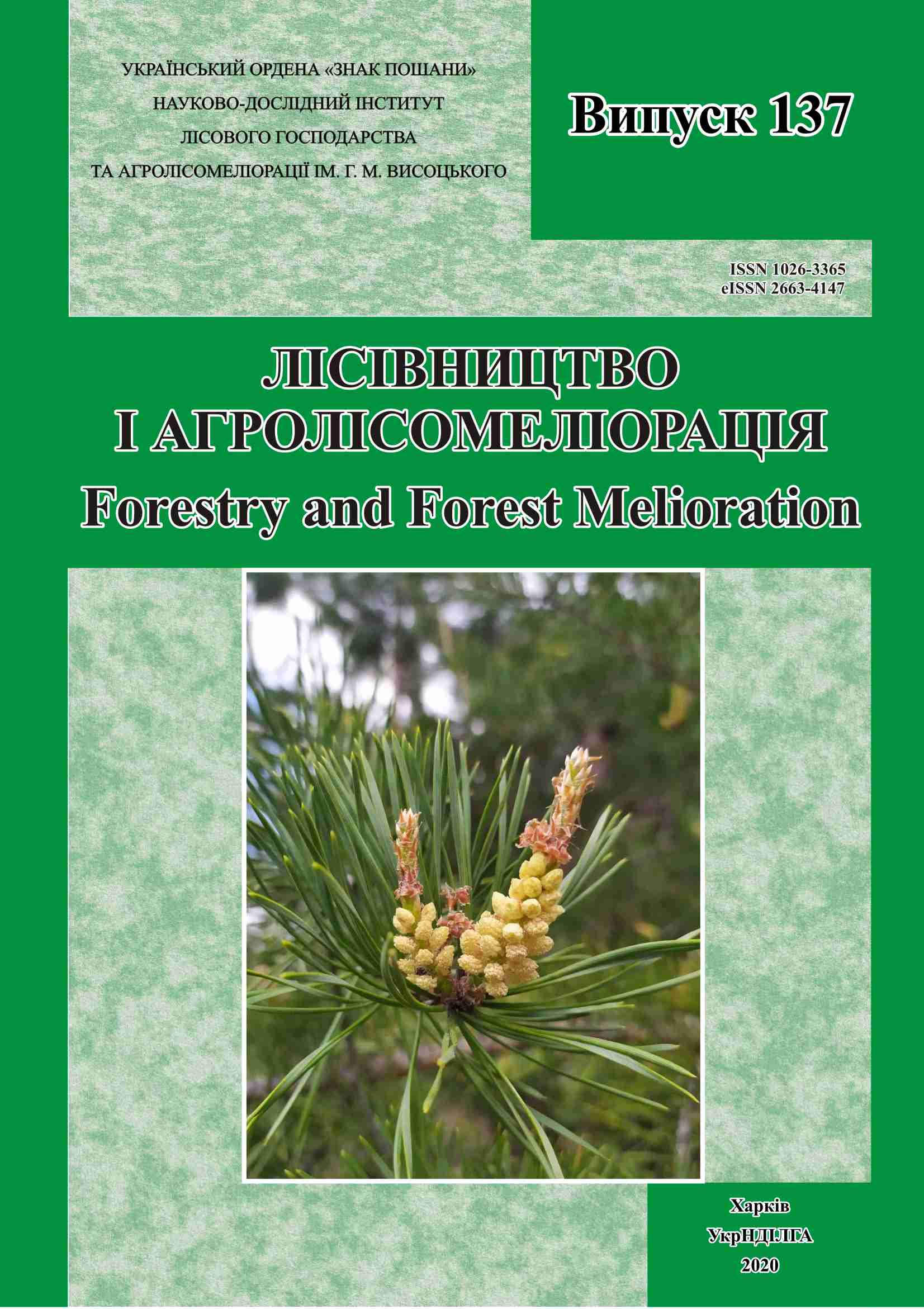Abstract
Introduction
In recent decades, particularly large forest fires have become more frequent in the world, causing unprecedented environmental, social and economic damage. One way to reduce the risks of such fires is providing scientifically reasonable amount of work on fire prevention, which should be based on assessing fire risks and identifying the most vulnerable areas.
The aim of the study was to assess the forest fire density in the regional aspect, to determine the main natural and socio-economic factors that affect the increase of fire danger in Ukrainian forests.
Materials and Methods
To assess the levels of fire risks in different regions of Ukraine, official statistics on forest fires were used by the number of cases and the burnt area. Climatic data are taken from the Climate Cadastre of Ukraine (2006). To estimate the density of landscape fires, the data on thermal anomalies recorded by MODIS sensors during 2006–2019 were used. The normalized difference vegetation index (NDVI) was used to assess the current condition of vegetation and to detect signs of drying and dying of plants (accumulation of dead fuel) during the fire season.
Results
The fire density of Ukrainian forests in the regional aspect has been estimated. Spatial and temporal features of forest and landscape fires, fire regimes, and the relationship of these indicators with a number of socio-economic, climatic and natural factors were determined. It is proposed to expand the created collection of thematic layers compatible with GIS systems, which are built due to the main topographic, climatic, natural and socio-economic variables that have an impact on increasing fire risk at the level of forests and natural landscapes.
Conclusions
The most vulnerable to forest fires regions are: Kherson, Luhansk, Kyiv, Donetsk, Zaporizhzhia and Dnipropetrovsk Regions. This information provides a basis for further analysis of climatic, socio-economic and natural factors that increase the risk of fires. It was found that the average classes of natural fire hazard which are still used in forestry practice in Ukraine for each region is not a reliable indicator for determining real fire risks. Thus, such approaches to assessing the natural fire hazard should be reviewed and scientifically grounded. The study showed that the main factors that have the greatest impact on increasing fire risk are: population density, the proportion of pine forests, the norm (for base period) for precipitation during the fire season, the norm for average temperatures during the fire season and the current conditions of live fuel (moisture content, share of dead fuel) in landscapes that surround the forest lands. This work is the basis that will provide further development of forest fire zoning based on pre-created thematic layers (raster and vector datasets) by factors that have a direct or indirect impact on increasing fire risks. The obtained data will be used in the development of forest fire zoning in Ukraine.
9 Figs., 1 Table, 11 Refs.
Key words: forest fires density, fire risks, pine forests, fire hazard.

This work is licensed under a Creative Commons Attribution 4.0 International License.
